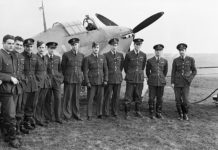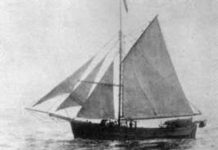If we do not remember those who sacrificed their lives in times of war for Canada, we are ultimately saying their actions were meaningless to us. For many of us today, war is something we only see on television or in the movies. The wars fought in the past were real and they affected Canadians of all races, ages and social classes.
We take for granted the freedoms and rights we have as Canadians. Our ancestors fought for these rights, to keep us protected and safe, so that we may never have to see or fight in a war again. On November 11, we must remember those who served and recognize their sacrifices. We must continue to hold the same beliefs they did and strive towards peace, so that our children will have the same freedoms we have grown up with.
Remembrance of the First World War (1914 – 1918)
April 22, 1915 at Ypres, Belgium, Canadians entered their first major battle. The Germans used chlorine gas to fuel their attack and a third of Canadian soldiers perished within 48 hours. Despite the enormous loss, the soldiers held the line and stopped the German advance.
In April of 1917, Canadian soldiers were victorious at Vimy Ridge. Again, more than 10,000 lives were lost in only six days, but Canadians emerged victorious. On November 11, 1918, the Armistice was signed. Canadians proved they could hold their own in times of war and took a new position amongst the nations of the world.
Remembrance of the Second World War (1939 – 1945)
Over one million Canadians, men and women, enlisted in the forces during WWII. By the end of the war, over 42,000 lives had been lost.
December 1941: Vastly outnumbered, out-gunned and under-trained, they were unsuccessful in defending Hong Kong against the Japanese; with 493 wounded and 557 fatalities.
August 19, 1942: On the European front, 4,963 Canadians attacked the French port of Dieppe. 3,367 men were killed, wounded or taken as POWs by the Germans.
In 1943, the Canadian soldiers helped to conquest Siciliy and defeated the Nazis in Italy, despite fierce resistance. They were on the front lines on June 6, 1944, on the coast of Normady. Otherwise known as D-Day, the fighting was intense and losses were heavy. 1,074 casualties resulted, 359 were fatal.
Remembrance Day Poem: Flander’s Fields
A French woman, by the name of Madame E. Guérin, suggested making and selling poppies to support wounded Veterans. The first of the poppies were distributed in Canada in November 1921. Lieutenant-Colonel John McCrae, a doctor, wrote a poem on these flowers, and it’s a poem that has taken a permanent place in the ceremonies of Remembrance Day:
In Flanders Fields the poppies blow
Between the crosses, row on row,
That mark our place; and in the sky
The larks, still bravely singing, fly
Scarce heard amid the guns below.
John McCrae
Significance of the Poppy for Remembrance Day and Two Minutes of Silence
The flowers and larks mentioned in John McCrae’s poem represent nature’s power in withstanding the destruction from war of men.
The two minutes of silence is scarcely enough time to remember all that we should. It is a mere moment in our day, to join with millions of fellow Canadians, to honor those who gave their lives for the future generations. Despite our distances, millions of Canadians all join in this ceremony, and for two minutes, on the same day, we are all doing the same thing.







